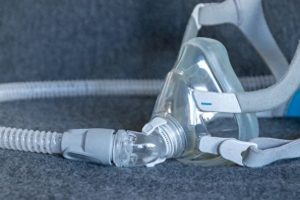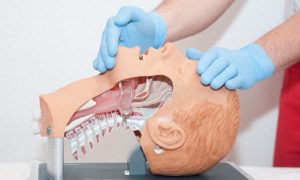A ventilator is a commonly used medical device that assists or replaces a patient's respiratory function. During the application of a ventilator, there are multiple modes of mechanical ventilation to choose from, each with specific indications and advantages. This article will introduce six common modes of mechanical ventilation and explore their clinical applications.

Intermittent Positive Pressure Ventilation (IPPV)
Intermittent Positive Pressure Ventilation is a common mode of mechanical ventilation where the inspiratory phase is positive pressure, and the expiratory phase is at zero pressure. This mode is widely used in managing patients with chronic obstructive pulmonary disease (COPD) and other respiratory failures. By applying positive pressure, the IPPV mode can improve gas exchange and ventilation efficiency, reducing the workload on the respiratory muscles.
Intermittent Positive-Negative Pressure Ventilation (IPNPV)
Intermittent Positive-Negative Pressure Ventilation is another common mode of mechanical ventilation where the inspiratory phase is positive pressure, and the expiratory phase is negative pressure. The application of negative pressure during the expiratory phase may lead to alveolar collapse, resulting in iatrogenic atelectasis. Therefore, caution is advised when using the IPNPV mode in clinical practice to avoid potential adverse effects.
Continuous Positive Airway Pressure (CPAP)
Continuous Positive Airway Pressure is a mode of mechanical ventilation that applies continuous positive pressure to the airway while the patient is still able to breathe spontaneously. This mode helps maintain airway patency by applying a certain level of positive pressure throughout the entire respiratory cycle. CPAP mode is commonly used to treat conditions such as sleep apnea syndrome and neonatal respiratory distress syndrome to improve oxygenation and reduce hypoventilation.

Intermittent Mandatory Ventilation and Synchronized Intermittent Mandatory Ventilation (IMV/SIMV)
Intermittent Mandatory Ventilation (IMV) is a mode where the ventilator does not require patient-triggered breaths, and the duration of each breath is not constant. Synchronized Intermittent Mandatory Ventilation (SIMV), on the other hand, utilizes a synchronizing device to deliver mandatory breaths to the patient based on preset respiratory parameters while allowing the patient to breathe spontaneously without interference from the ventilator.
IMV/SIMV modes are often used in cases where low respiratory rates are maintained with good oxygenation. This mode is frequently combined with Pressure Support Ventilation (PSV) to reduce respiratory work and oxygen consumption, thereby preventing respiratory muscle fatigue.
Mandatory Minute Ventilation (MMV)
Mandatory Minute Ventilation is a mode where the ventilator provides continuous positive pressure without delivering mandatory breaths when the patient's spontaneous respiratory rate exceeds the preset minute ventilation. When the patient's spontaneous respiratory rate reaches the preset minute ventilation, the ventilator initiates mandatory breaths to increase the minute ventilation to the desired level. MMV mode allows adjustment based on the patient's spontaneous breathing to meet the respiratory needs.
Pressure Support Ventilation (PSV)
Pressure Support Ventilation is a mode of mechanical ventilation that delivers a predetermined level of pressure support during each inspiratory effort made by the patient. By providing additional inspiratory pressure support, PSV mode enhances the depth of inspiration and tidal volume, reducing the respiratory workload. It is often combined with SIMV mode and used as a weaning phase to reduce respiratory work and oxygen consumption.
In summary, the common modes of mechanical ventilation include Intermittent Positive Pressure Ventilation, Intermittent Positive-Negative Pressure Ventilation, Continuous Positive Airway Pressure, Intermittent Mandatory Ventilation, Synchronized Intermittent Mandatory Ventilation, Mandatory Minute Ventilation, and Pressure Support Ventilation. Each mode has specific indications and advantages, and healthcare professionals select the appropriate mode based on the patient's condition and needs. During the use of a ventilator, clinicians and nurses make timely adjustments and evaluations based on the patient's response and monitoring indicators to ensure optimal mechanical ventilation support.